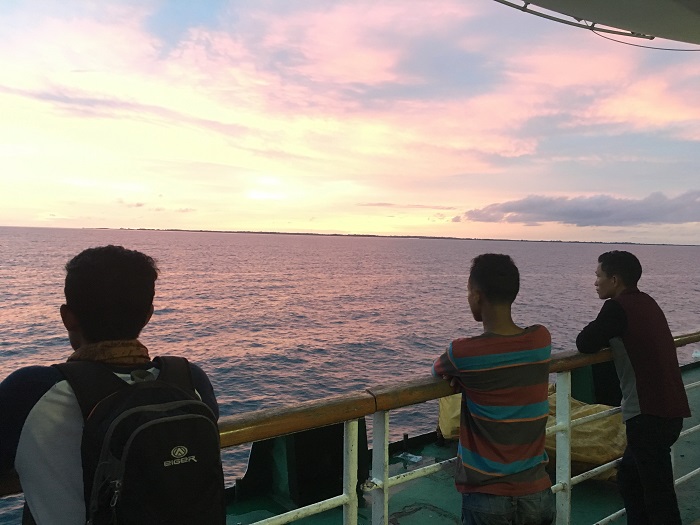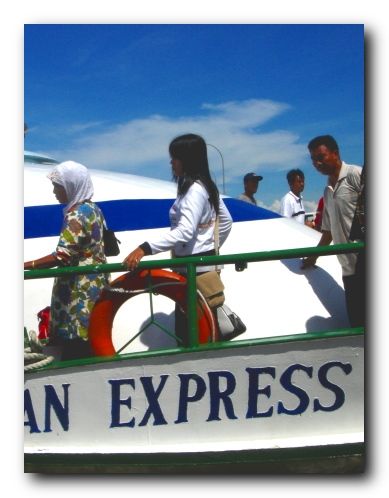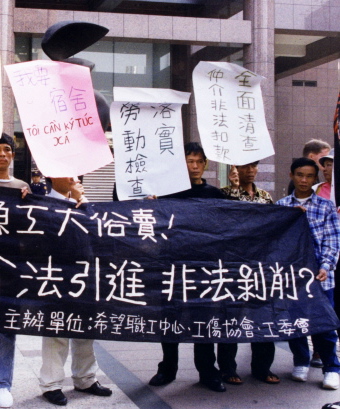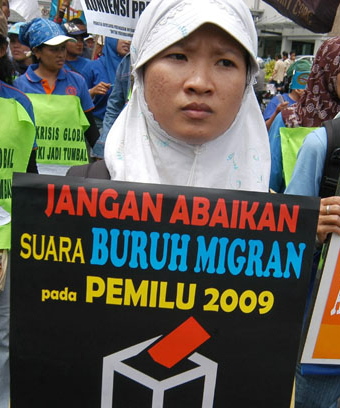Flores youth migrate for education, but are their university degrees worth the investment?
Jessica N Clendenning
Ris was originally from a rural village in Manggarai district, central west Flores, where I had been doing research. I had already met his mother and many other neighbours and relatives from repeated visits and stays in the village. On this occasion, my research assistant and I had travelled to Makassar, Sulawesi where Ris was studying at a university, to meet him at his kos (boarding house). We were sitting on the floor with his peers drinking coffee and discussing his family. When I showed him a recent picture of his mother, he cried. Ris had not been back to Flores in over four years.
At the time, things were difficult for Ris. Over the previous four years he had been working night jobs and studying at a private teaching university. Now, however, he was stuck, as neither he nor his mother had money to pay for a required semester course called Kuliah Kerja Lapangan (field work lecture), offered in Jakarta. The one-week course was almost four times the cost of one semester of schooling: Rp.4.2 million (A$420) compared to his regular semester costs of Rp.1 million. Ris was forced to take leave from school until he could find the funds to cover the course, and only then continue his research thesis and eventually (hopefully) graduate. But this setback was frustrating – he had come too far to quit.
In 1961, the anthropologist Edward Bruner referred to education as a ‘golden plough’, describing how rural Batak people used education as a means to escape agrarian life in North Sumatra. Today, people in rural areas across the Indonesian archipelago still use and think about education in this same way. As a largely agrarian island in eastern Indonesia, Flores is a place where many farming families, such as Ris’s, invest in the golden plough of education for their children. And, much like the rural Batak, many young people today (and their parents) hope to become something other than farmers.
But education as the pathway to upward mobility and its supposed (non-farming) ends does not always work out for young people like Ris.

Investing in hope
When we visited, Ris’s kos was filled with other young people from Manggarai district, many of whom were from the same village areas as Ris, and shared the Manggarai language and ethnicity. Besides this, many of these young people shared similar paths in migration and education: that is, most migrated to Makassar so they could both study and work, and most were hoping to receive undergraduate degrees in education. Many were also studying at the same private university as Ris.
Ris and his peers explained that they did not actually want to be teachers – at least not in Flores – as salaries were low and jobs hard to find. Instead, many wanted to get their diplomas and become entrepreneurs, or teach elsewhere, in places like Papua or Kalimantan, where they said teachers’ salaries are higher and jobs easier to find. They chose to study in Makassar because, compared to tertiary institutions in Flores, this university offered undergraduate education they could afford. Similarly, living in Makassar meant they could work while studying (to cover costs to help their parents). Compared to the village and Flores’ small economy, Makassar seemed to be a place of opportunity, for work and a degree.
Back in the village
Ris’s village sits among steep mountains and windy, narrow roads. Almost all families here are farmers, who own a few small fields for tree crops such as bananas, coffee, candlenut and clove spice, and terraced land for rain-fed rice paddies, corn and vegetables. As the plots of land are small and growth dependent on seasons, almost none of the families produce enough rice to last a year. The area has no electricity or running water, and families use firewood to cook their meals. Houses are simple and made of wood, cement or a mix of both.
Ris is the oldest of three boys and the only one in his family to finish senior high school (SMA) and advance to university. The middle brother – who recently moved to Makassar and works in a motorcycle shop – quit after primary school (SD). The youngest brother, who is still in the village but is eager to see Makassar, has re-entered junior high school (SMP) to help the family receive government assistance.
As a single mum, Ris’s mother supports the family through seasonal harvests of coffee, corn, rice or vegetables from her two fields. If time allows, she also makes and sells handmade weavings every few months. Ris’s father left the village in 2001 to work in Malaysia and has not returned since, nor has he supported the family.
As the most educated and oldest boy, Ris felt a duty to finish university and find outside work to help support the family. But considering the family’s circumstances and income, I asked Ris (and his mother) why he continued going to school instead of working. Determination, he said. He wants to be successful.
From the village, to be ‘successful’ was the most frequently cited motivation for families to pour large investments into education or migration. Success, for young people, meant lives different from their parents. This largely meant expanding their opportunities by obtaining an undergraduate degree, and hopefully, an office job. Farming was always the last, fall back option.

These marked changes in education and migration – trends that were noticeably different from the generations before – were present across most households I visited. Greater numbers of young men – and notably young women – were migrating to Bali, Makassar and Kupang in search of opportunities in education and employment. While these movements were motivated by a range of social and economic factors, parents often said it was the child’s decision to migrate. Ris’s story is one example out of many of the hopes, aspirations and, potentially, burdens young people placed on these migratory pathways, and it seems, on these degrees.
In pursuit of a degree
In the village, the flow of information about educational pathways was, like phone reception, often limited. On clear evenings, young boys would sometimes huddle over a mobile phone on a hillside or inside homes known for strong signals – often watching football, music videos or chatting on Facebook. Like these intermittent signals, news and events from elsewhere would trickle in by text message and phone calls, and spread further by word of mouth. These circumstances meant that most households in the village, such as Ris’s, had fairly limited access to outside information. When choosing a place for work or study, then, many families relied on the networks and experiences of kin and neighbours who had already been away.
When I met Ris in Makassar, the impact of these close social networks was evident. Not only was the student house filled with young Manggarai from similar villages, but many were alike in their types of work, degree and university programs. It should have been unsurprising then to learn that, upon visiting Ris’s private university, nearly 90 per cent of the student population were Manggarai.
This concentration of Manggarai students, coupled with the cost and prevalence of their undergraduate teaching degrees, raises questions about these migration pathways and investments in education. As many Manggarai youth have limited experience and money, they follow similar routes, leading to common outcomes in schools, diplomas and jobs. In Flores and elsewhere, there is a glut of unemployed young people with education degrees because there are relatively few available teaching jobs. Instead – like Ris and his peers – many aspire to become business owners. These hopes, however, are often dashed by their limited range of capital – understood in terms of networks, experience and money – and of course limited volume.
Many farming families invest heavily in university education, and place great hope in these degrees as pathways to ‘success’. But, they are largely inexperienced – and have little choice – in choosing higher education pathways. They therefore do not question the relatively expensive field work lecture in Jakarta, nor do they question a private institution’s education standards when a single ethnicity dominates its population.
The golden plough?
While many rural young people were gaining new experiences outside of village life, the pursuit of a degree – or alternatively, work – in Makassar, seemed (unsurprisingly) to be cultivating greater aspirations for the future. But the extent to which these degrees actually enable upward mobility was a large, looming question.
The Makassar case is illustrative of trends elsewhere in the archipelago that attract similar naïve student populations based on their affordability, location and available degrees. The wider problem is when the practice of education – especially a university which serves a vulnerable population – operates more akin to a business delivering degrees.
Many rural young people in Indonesia, and across the world, hope for better futures. And, much like Bruner’s golden plough, rural families use education as a potential pathway out of farming. While paths to secure, salaried, ‘successful’ jobs are not impossible in Indonesia, they are few and far between in rural areas and regions such as eastern Indonesia. More likely scenarios, rather, are migration for service based employment or project work, all of which are tenuous, low-paid, and precarious jobs with slim hopes for long-term futures. Even living in cities elsewhere can be expensive and particularly difficult for young people and families, and, at times, act as a drain on relatives in the village.
Many rural young people from Flores make limited gains from the golden plough of education. Many, that is, achieved only outward movement, rather than upward as they hoped for. These youth trends are consequential for a nation that has a population filled with diverse, aspiring young people, ageing smallholders, growing cities and an incredible amount of productive land, forests and seas.
Jessica Clendenning (jessica.clendenning@u.nus.edu) is a PhD candidate in Geography at the National University of Singapore.














